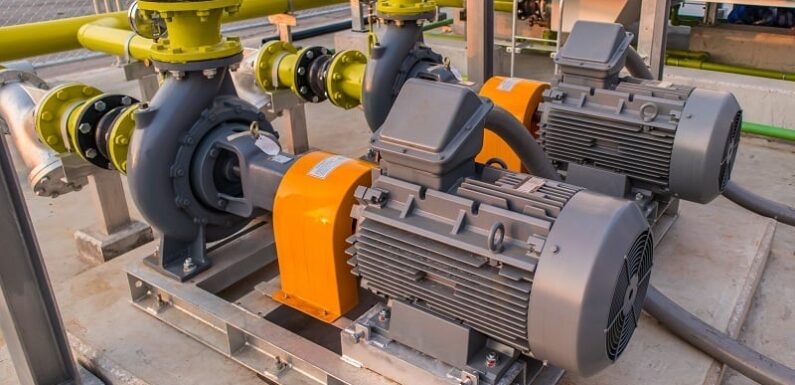
The hydraulic pump motor sits at the heart of countless machines that power our modern world, from construction equipment to manufacturing plants, yet remains largely invisible to those who benefit from its work. These remarkable devices convert electrical or mechanical energy into hydraulic energy, creating the force needed to move tremendous weights with precision and reliability. What makes them so essential—and why should you care about how they function?
The Fundamentals: Understanding Hydraulic Systems
At their core, hydraulic systems operate on a simple principle: pressure applied to a fluid in one location will transmit to another location without losing its force. This fundamental law of physics, discovered by Blaise Pascal in the 17th century, creates mechanical advantage—allowing relatively small input forces to control much larger output forces.
The hydraulic pump motor serves as the prime mover in this equation. It generates the initial pressure that flows through the entire system, creating the potential energy that will later become kinetic energy at the point of work.
“Singapore’s maritime and construction sectors have embraced advanced hydraulic pump motor technology, achieving up to 37% greater efficiency than conventional systems while operating in our challenging tropical climate,” notes the Singapore Industrial Engineering Association.
Types of Hydraulic Pump Motors That Matter
Not all hydraulic pump motors are created equal. Their designs vary significantly based on application requirements:
· Gear Pump Motors:
Simple, rugged, and cost-effective. These workhorses handle medium pressure applications with remarkable reliability.
· Vane Pump Motors:
Offering better efficiency and quieter operation, these excel in industrial machinery where noise reduction matters.
· Piston Pump Motors:
When maximum pressure and precision control are non-negotiable, these sophisticated units deliver exceptional performance despite their higher cost.
· Bent Axis Piston Pump Motors:
The elite option for heavy-duty applications requiring both high pressure and high flow rates simultaneously.
Real-World Applications That Demonstrate Their Value
The theory matters little without practical application. Consider the excavator at a construction site, precisely moving tons of earth with the operator’s slight hand movements. Or the precision manufacturing equipment producing components with tolerances measured in micrometres. Both rely on hydraulic pump motors to translate human control into powerful, precise action.
Beyond construction and manufacturing, these versatile components drive numerous essential systems. Aircraft landing gear deploys reliably through hydraulic pump motors. Massive cargo ships steer through narrow channels with their help. Even amusement park rides deliver thrills through carefully calibrated hydraulic systems powered by these motors, demonstrating their remarkable versatility across industries where failure simply isn’t an option.
“The integration of smart sensors with hydraulic pump motors in Singapore’s automated port operations has reduced energy consumption by 22% while increasing throughput by 15%,” according to findings from the Singapore Maritime Technology Conference.
Efficiency Considerations: The Numbers That Matter
The efficiency of hydraulic pump motors directly impacts several critical factors:
· Energy consumption:
A 5% improvement in hydraulic efficiency can yield thousands in annual energy savings for industrial operations.
· Heat generation:
Less efficient systems produce more heat, requiring additional cooling systems and creating a cascade of inefficiencies.
· System longevity:
Properly matched hydraulic pump motors operating at optimal efficiency experience less wear, extending service life by up to 40%.
· Operational costs:
Beyond energy, maintenance costs decrease substantially with properly specified and maintained hydraulic pump motors.
Maintenance Wisdom: Protecting Your Investment
The longevity of any hydraulic pump motor depends largely on maintenance practices. Regular fluid analysis reveals developing problems before they cause catastrophic failures. Monitoring operating temperatures helps identify inefficiencies before they create permanent damage. Listening for unusual noise signatures can alert technicians to developing problems.
“Preventative maintenance programmes for hydraulic pump motors within Singapore’s manufacturing sector have demonstrated a 3:1 return on investment through reduced downtime and emergency repair elimination,” reports the Singapore Maintenance Engineering Council.
The Future: Where Innovation Is Taking Hydraulic Technology
The hydraulic pump motor continues to evolve. Today’s innovations focus on several frontiers:
· Integration of electronic controls for real-time performance optimisation
· Development of variable displacement systems that adjust output to demand
· Creation of hybrid systems combining hydraulic and electric drive technologies
· Implementation of IoT monitoring capabilities for predictive maintenance
These advances promise even greater efficiency, control, and reliability in the next generation of hydraulic systems.
Making the Right Choice: Decision Factors
When selecting a hydraulic pump motor, several factors deserve careful consideration:
· Required pressure and flow rate specifications
· Duty cycle expectations
· Environmental conditions
· Efficiency requirements
· Maintenance capabilities
· Initial vs. lifetime costs
· Noise tolerance levels
· Compatibility with existing systems
· Space constraints and mounting options
· Availability of replacement parts
The initial investment represents just a fraction of the lifetime cost of operation, making quality and efficiency paramount considerations for any serious hydraulic pump motor application. Many engineers make the costly mistake of underspecifying motors, only to face accelerated wear, excessive downtime, and premature replacement—a false economy that savvy professionals carefully avoid.
Conclusion: The Unseen Force Multiplier
The hydraulic pump motor exemplifies engineering at its finest—taking a simple physical principle and creating systems that multiply human capability exponentially. While rarely seen or celebrated, these devices enable much of the construction, manufacturing, and transportation that shapes our modern world. As efficiency demands increase and technology advances, the continued evolution of the hydraulic pump motor promises even greater capabilities for tomorrow’s applications.

